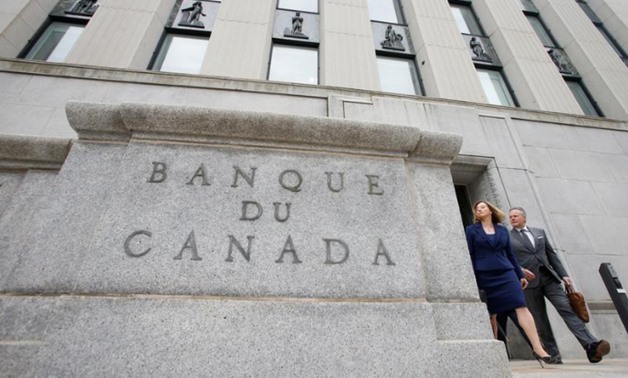
Bank of Canada Governor Stephen Poloz (R) and Senior Deputy Governor Carolyn Wilkins walk to a news conference in Ottawa, Ontario, Canada, July 12, 2017. REUTERS/Chris Wattie
OTTAWA - 11 September 2017: The Bank of Canada’s reticence to guide markets on the future path of monetary policy has left many scrambling to determine how quickly the central bank plans to raise rates after a recent hike caught many off guard.
Some central bank watchers also took issue with last Wednesday’s interest rate increase because it came after nearly two months of policymaker silence following an initial rate hike in July, which was well telegraphed to the market.
That lack of public speeches was one factor that had many thinking the Bank of Canada would hold off until October to raise rates again.
Without insight beyond Wednesday’s statement, which left the door open to more hikes, analysts are struggling to determine how aggressive the central bank may be in tightening.
And markets may have read the central bank as being more hawkish than it actually is, given the 2 percent jump in the Canadian dollar CAD=D4 over the two sessions following the hike.
“With an absence of greater communication leading up to that rate hike, we’ve been thrown into the lurch somewhat as to how to interpret monetary policy going forward,” said Scott Smith, chief market strategist at Viewpoint Investment Partners.
Analysts are hoping a speech and news conference by Bank of Canada Governor Stephen Poloz on Sept. 27 will provide clues on how fast the central bank could move from here.
“The market has interpreted policy going forward one way but the concern is maybe the Bank of Canada hasn’t telegraphed that exactly as they would like,” said Smith.
“If it gets walked back, all we’re going to have is more elevated levels of volatility in the Canadian dollar and financial markets in general.”
A Reuters poll of primary dealers forecast on Thursday that the bank will raise three times in 2018, a more aggressive pace than previously anticipated. [CA/POLL]
The central bank could stand to be more consistent about what it will and will not communicate, given its signaling ahead of its July rate hike, said Dana Peterson, economist at Citigroup.
“Where’s that line between forward guidance and something that’s not forward guidance?” Peterson said.
Poloz stopped giving forward guidance that provides a direct hint on the next move in interest rates in 2014.
A Bank of Canada spokeswoman pointed to Poloz’s comments from July, in which he emphasized that monetary policy will remain “highly data-dependent.”
The silence between the two meetings created a great deal of uncertainty for markets, said BMO Capital Markets chief economist Doug Porter, calling the lack of communication an “epic fail” in a research note.
Economists said that while the central bank is not obligated to steer markets, the lack of cues on future policy underscores the challenge of forecasting rates.
But the surprise factor itself can be used by the central bank to enhance the effectiveness of its policy moves. The bank shocked markets with a rate cut in January 2015 in an effort to jump-start an economy that was being hammered by falling oil prices.
The bank may be also be trying to retain an element of surprise as it moves rates higher, with policymakers concerned about high levels of consumer debt, which is sitting at near record compared to income, said Karl Schamotta, director of global markets strategy at Cambridge Global Payments.
“If the bank is really tilting against this debt bubble that we have growing in Canada, it really makes sense to scare consumers, to really fire that warning shot across the bow and to indicate to consumers that rates are going up,” Schamotta said.

Comments
Leave a Comment